Wednesday 28 January 1942
 |
| Bf 109 F-2 WNr. 8086 of Uffz Alfred Döllefeld "Gelbe 7", 9./JG 54, Notlandung 28.January 1942 at Gr. Machim due to engine damage (damage reported as 30%). Eastern Front, Winter 1941-1942. |
Battle of the Mediterranean: After a couple of days when operations were stopped by a desert sandstorm, Lieutenant General Erwin Rommel's Afrika Korps on
28 January 1942 once again approaches Benghazi. Rommel's forces also have been hampered by fuel shortages, enabling vulnerable British troops at Msus to escape. The Germans make good time, brushing aside British outposts at Ghemines on the coast along the line of approach, at Soluq just to the east of Ghemines, and at Regina, east of Benghazi. Some British and Commonwealth troops remain in the port but know they are in danger. Many already have escaped to the southeast or have been taken out by ship or plane. The panzers approach Benghazi from three directions, with the bulk of the Axis forces coming east from Msusu towards Bir Gerrari. A large part of the 90th Light Division and XX Corps ride up the Via Balbia to envelop Benghazi from the south, and a fast mobile assault column heads past Benghazi to cut the coast road to Tobruk.
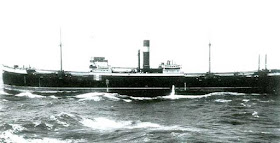 |
| SS Ninuccia, a 4583-ton Italian freighter sunk on 28 January 1942. Royal Navy submarine HMS Thorn (Lt. Cdr. R. G. Norfolk), operating just east of Mulo Island Lighthouse, Croatia, hits Nunuccia with one of five torpedoes. The Thorn also uses its deck gun to sink the freighter. |
The German fast mobile assault column makes the most dramatic move on the 28th, reaching Er Regina, east of Benina, in the morning and then moving to block as many land escape routes as possible. However, it is a large desert and the Axis forces are insufficient to throw a tight cordon around Benghazi. The British have had ample time to study their escape routes and elude the Germans and Italians. After dark, the last Allied contingent (Indian 7th Brigade) in Benghazi sneaks out to the south and the Axis troops immediately occupy the port city. However, 1,000 Allied troops remain to be taken prisoner along with 300 vehicles and vast quantities of supplies that the Germans put to good use. The fall of Benghazi comes only a day after Winston Churchill finally gave his lengthy victory speech in the House of Commons for Operation Crusader, whose gains are now in jeopardy of being completely erased. This is the fourth time Benghazi has changed hands during World War II.
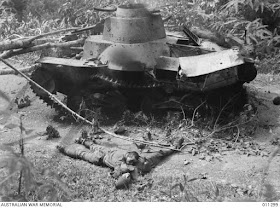 |
| "One of the Japanese Type 95 Ha-Go [Type 2 Ka-M] light tanks halted by the Australians' deadly anti-tank gunfire." 28 January 1942. Australian War Memorial 011299. |
Battle of the Pacific: Australian troops covering the retreat into Singapore Island receive "Warning Orders" that they will be retreating back toward the island over the next few days. Three battalions, with the 2/20 (strength today of 36 Officers and 781 men) in the center, are to move early on 29 January south to the "Outer Bridge Head Force" line just outside Johore Bahru. This will cover the withdrawal of all remaining forces on the mainland to Singapore Island. The Japanese, however, have not gotten the memo and continue to attack all along the line. They reach Benut on the west coast and continue southward, attempting to cut off the Indian 11th Division. Using an opening along a railway line, the Japanese do manage to cut off the retreat route of the 22nd Brigade of the Indian 9th Division.
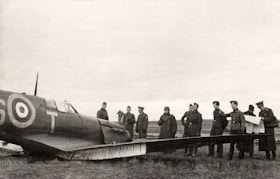 |
| A Spitfire (shown) flown by RAF ace Robert Stanford Tuck that was shot down by anti-aircraft fire near Boulogne over northern France on 28 January 1942. Tuck was participating in a "Rhubarb raid" designed to draw up Luftwaffe fighters into combat. Tuck finishes his World War II flying career with 29 enemy aircraft destroyed, two shared destroyed, six probably destroyed, six damaged, and one shared damaged. Tuck is sent to Stalag Luft III at Żagań (Sagan), where he participates in the planning for the "Great Escape." Tuck passes away on 5 May 1987. |
In Singapore, the British commanders study the defense of Singapore Island itself, apparently for the first time. Lieutenant-General Arthur Percival, General Officer Commanding, Malaya Command, orders his subordinates to turn the island's 15-inch guns north. Only one is able to be used on land targets, however, and the ammunition is found to be decades old. There is little air support against the increasingly aggressive Japanese bomber runs, with only 21 Hawker Hurricane fighters out of the 51 that arrived on a freighter on 13 January still operational. There are no reserves in Singapore, so the beach defenses will have to be manned by troops that manage to cross the long causeway from Johore. The battle on the mainland thus takes on the character of a race for the bridge, a race that many Commonwealth troops lose.
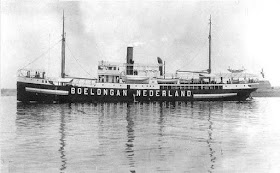 |
| Dutch 1053-ton freighter MV Boelongan, sunk on 28 January 1942. Japanese aircraft bomb and sink it near Padang (Sumatra). |
In the Philippines, the Allies settle into their new Main Line of Resistance (MLR) across the Bataan Peninsula but cannot fully seal it in time. The Japanese attack in the evening and cross the Tiawir River before being stopped. On the west coast, the Japanese shift their attack units east, away from US Army troops, to positions opposite the Filipino Army 1st Division sector. After dark, the Japanese here get through this part of the MLR and fan out to the east and west. However, the Allied troops close the breach and trap the Japanese. They are forced into two fortified defensive positions called the Big Pocket, about a mile behind the MLR, and the Little Pocket, only about 400 yards south of the MLR.
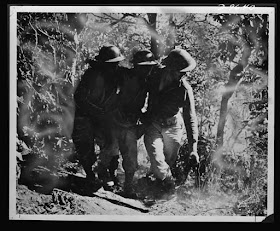 |
| Original caption: "One of our Filipino boys, injured in the fighting on Bataan, January 28, 1942, being brought back to a first aid station by his comrades. Longoskawayan Point, West Coast." |
The Japanese forces south of the MLR at Longoskawayan Point and Quinauan Point continue to hold out. Filipino Scouts of the 2d Battalion, 57th Infantry Regiment attack the former position and take about two-thirds of the Japanese territory. The 3d Battalion of the 45th Infantry Regiment attacks the Japanese at Quinauan Point but make little progress because the defenders are aided by dense jungles. Another Japanese bridgehead, at Anyasan Bay, easily fends off an attack by a motley collection of USAAF ground echelon troops recently converted to infantry and the untrained Philippine Constabulary unit.
 |
| "Airmen of No. 306 Polish Fighter Squadron in front of one of their Spitfires at RAF Churchstanton, 26-28 January 1942." © IWM (CH 4791). |
The Japanese land troops on Rossel Island, the easternmost point in the Louisade Archipelago. While the island itself is of little value, its geographical position about 490 miles southeast of Port Moresby, New Guinea, and 420 miles southwest of Guadalcanal in the Solomon Islands makes it ideal for Japanese plans. While the island is undeveloped, the Japanese quickly begin building an airfield to establish dominion over the ocean in this critical spot.
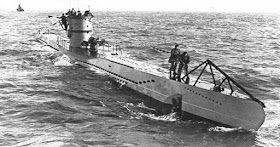 |
| A VP-82 PBO-1 Hudson flown by AMM1c Donald L. Mason attacks U-85 (shown) on 28 January 1942. The U-boat is operating near Argentia, Newfoundland. Mason signals to base that he has sunk the U-boat, but, in fact, he misses and the U-boat escapes to be sunk on 14 April 1942. |
Eastern Front: The unexpected success by a small German force to relieve the trapped garrison at Sukhinichi leads Adolf Hitler to begin dreaming of bigger successes. He asks the Second Panzer Army to convert the relief operation, which barely reached the town, to continue to the northeast toward a Fourth Army garrison at Yukhnov. This, at least theoretically, would trap a large Red Army force to the west. The plan bears remarkable similarities to Hitler's desire to have Army Group North continue its advance past Tikhvin in November 1941. Second Panzer Army commander General Rudolf Schmidt has to explain to the Fuehrer that further advances are impossible until reinforcements arrive.
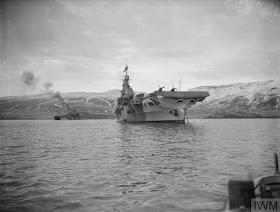 |
| "The aircraft carrier HMS VICTORIOUS in Hvalfjord." 23-28 January 1942. © IWM (A 7320). |
The Soviet Stavka (military command) creates the Crimean Front under Lieutenant General Dmitry Timofeyevich Kozlov. It includes the 44th, 47th, and 51st Armies. The Separate Coastal Army and Black Sea Fleet also come under Kozlov's control. General Kozlov is inexperienced and has been hastily promoted from a regimental command, and his staff also is inexperienced. The Stavka sends Lev Mekhlis to Kozlov's headquarters to help plan strategy, and the two agree to launch an offensive in mid-February to reconquer the entire Crimea. The Soviets in general and Kozlov, in particular, remain under the impression that the Red Army has military superiority in the Crimea when the opposite is true. In addition, the Kerch Peninsula has poor roads and the Luftwaffe has complete aerial superiority, making road movements in daylight extremely hazardous for the Soviets.
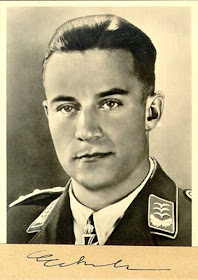 |
| Luftwaffe ace Franz Eckerle has a big day on 28 January 1942, shooting down three Soviet planes, an I-18 and two I-180s. Top Luftwaffe aces often had signed cards, much like American baseball players had cards. KIA 14 February 1942. |
German Military: Adolf Hitler personally awards his top Luftwaffe ace, General Adolf Galland, with his 2nd Diamonds to the Knight's Cross as Oberst and Geschwaderkommodore of Jagdgeschwader 26 "Schlageter." Galland currently is servicing as the commander of all German fighter forces (
General der Jagdflieger) in place of the deceased Werner Mölders. The Luftwaffe maintains aerial superiority in both East and West, so Galland is concentrating on offensive operations involving fighter-bomber attacks in England.
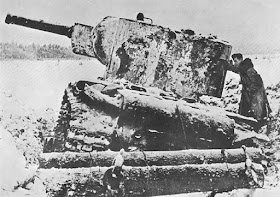 |
| A Soviet KV-2 captured by the Germans and put into use on the Kalininsky front. 28 January 1942. The Germans would sometimes use captured tanks as "Beutepanzers" ("booty tanks"). (Armes Militaria Magazine " Bataille pour Moscow"). |
US Military: Admiral Halsey orders his flagship, aircraft carrier
USS Enterprise, to refuel after dark. This is the first time such a large ship attempts this. Beginning at 20:00, oiler USS Platte hooks up and accomplishes the novel feat without any difficulty. The refueling is done by 01:00 on 29 January 1942.
The USAAF activates Headquarters, US 8th Air Force, at Savannah AAB, Savannah, Georgia. Brigadier General Asa N. Duncan is in command. Various subordinate commands, such as the 96th Bombardment Group (Heavy) (currently the 96th Test Wing), also are constituted on 28 January 1942. At this time it is unclear where the new command will operate, but it is tentatively allocated to projected Operation Gymnast, the invasion of North Africa. Operation Gymnast was agreed to at the Arcadia Conference in early January 1942, but there currently is no schedule for its launch.
 |
| Construction of a US naval base at Londonderry, Northern Island, 28 January 1942. "The piles used in the construction of the Western end of the wharf." © IWM (A 9561). |
1942
January 1942
January 1, 1942: Declaration By United Nations
January 2, 1941: Manila Falls to Japan
January 3, 1942: ABDA Command Announced
January 4, 1942: MacArthur on His Own in the Philippines
January 5, 1942: Soviets Plan General Offensive
January 6, 1942: US Army in Europe
January 7, 1942: Soviet General Offensive Opens
January 8, 1942: Hitler Sacks Hoepner
January 9, 1942: Battle of Dražgoše
January 10, 1942: Building the Jeep
January 11, 1942: Japan Takes Kuala Lumpur
January 12, 1941: Rommel Plans Counterattack
January 13, 1942: First Ejection Seat Use
January 14, 1942: Operation Drumbeat First Sinking
January 15, 1942: U-Boat Off NYC
January 16, 1942: Carole Lombard Crash
January 17, 1942: British Take Halfaya Pass
January 18, 1942: Soviet Paratroopers in Action
January 19, 1942: FDR Approves Atomic Bomb
January 20, 1942: The Wannsee Conference
January 21, 1942: Parit Sulong Bridge Battle
January 22, 1942: Parit Sulong Massacre
January 23, 1942: Japan Takes Rabaul
January 24, 1942: Battle of Makassar Strait
January 25, 1942: Kholm Surrounded
January 26, 1942: GIs Land in Europe
January 27, 1942: Battle of Endau
January 28, 1942: Rommel Takes Benghazi
January 29, 1942: First US Coast Guard Ship Sunk
January 30, 1942: Singapore Isolated
January 31, 1942: Army Group South Averts Disaster
2020












No comments:
Post a Comment